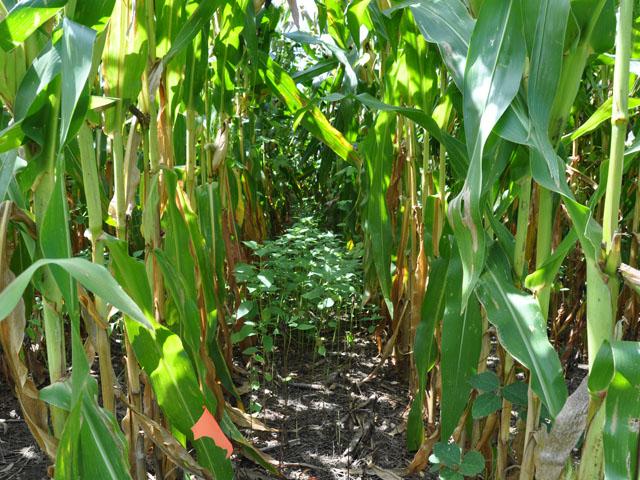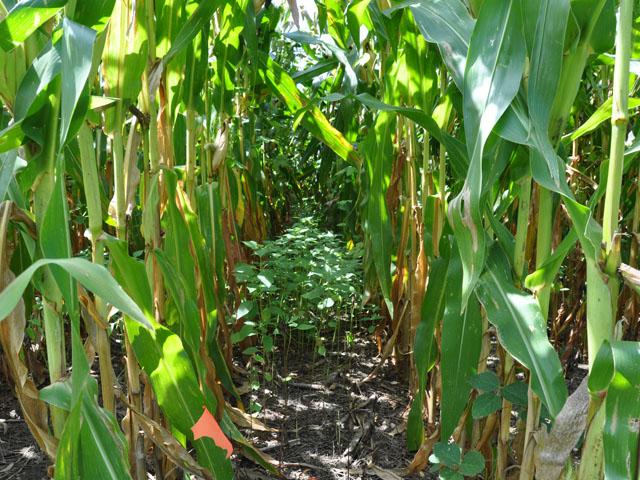Ag Policy Blog
Looking for Ways to Transform the Chaotic Carbon Market for Ag
With at least 22 different carbon programs being marketed now to farmers by private companies, a new research paper looks at how those programs should be transformed to deal with barriers to adoption and ideally broaden the adoptions of conservation practices in the process.
A big barrier still comes down to money.
The paper, "Agricultural Carbon Programs: From Program Chaos to Systems Change," looks at some of the dynamics going on in carbon markets without specifically calling out any single company in the markets. The report looks at the overall picture as carbon markets still remain in their infancy.
The report was released by American Farmland Trust and presented Wednesday at the Soil and Water Conservation Society (SWCS) annual meeting in Des Moines.
While there are 22 programs right now, at least 16 of those programs have been developed in the past eight years.
"They just really exploded and many of them even last year were just released," said Robert Parkhurst, co-author and president of Sierra View Solutions. "There's an opportunity right now to transform them. There's a lot of activity."
The study looks at economics, additionality concerns, permanence requirements and the data/technology barriers for agriculture as well.
"The focus with policymakers is, what can they do to remove the barriers to adoption?" Parkhurst said.
USDA INITIATIVES AND DOLLARS
Programs continue to merge or redevelop as well with the $3.1 billion USDA funding through the Partnerships for Climate-Smart Commodities.
P[L1] D[0x0] M[300x250] OOP[F] ADUNIT[] T[]
USDA also last month rolled out a $300 million program that will examine "measurement, monitoring, reporting and verification" of greenhouse emissions and carbon sequestration in agriculture as well. All of that will eventually translate into USDA creating a guidance or standard for practices and certification for carbon markets.
Looking at economic issues, the new report cites that carbon programs right now "do not cover the full cost of adoption, the producers cannot fully recover their investments and may experience reduced yields in the early years after adoption, further enlarging the economic impact." Companies, for instance, may be paying $15 to $25 for farmers to grow cover crops. Meanwhile, the Environmental Quality Incentives Program (EQIP) will pay producers $50 to $54 for the same practices. Producers in some Chesapeake Bay states can receive up to $95 an acre for cover crops.
"When you add on state and federal incentives, they are double or triple what these carbon markets are paying for," said Michelle Perez, water initiative director at the American Farmland Trust and co-author of the paper.
An experiment involving hundreds of farmers in Indiana found it would require nearly $40 an acre for them to implement no-till farming practices. A carbon payment of $30 an acre is only going to bump up a producer's gross revenue by 2.5%.
"So, I really love that part of the analysis that the price is just not right yet" in carbon programs, Perez said. "For a lot of people, explaining why people aren't jumping through the hoops -- they will get over the frustration, the confusion, the lack of transparency, the suspicion or worry about the contract, if the prices were more attractive. They aren't willing to put up with any of that until the price becomes more attractive."
For some, economics and additionality go together. Early adopters lament they cannot enroll in carbon programs because of the lack of additionality. Yet, that only affects about 5% of cropland in cover crops and roughly 30% of acreage that is in strictly no-till production. Those producers could be rewarded through programs in which they teach their practices to other farmers such as using the technical assistance program at NRCS, Parkhurst said.
"There has got to be a way to pay these producers to continue and expand the market, and build on what they have done," Parkhurst said.
BEYOND COVERS AND NO-TILL
Perez also pointed out nearly every one of the carbon programs have limited their payments to a small number of practices, particularly no-till and cover crops. USDA, in its climate-smart program, cited a much broader list of practices, including nutrient management, enhanced efficiency fertilizers, manure management, feed management to reduce enteric emissions, buffers, wetlands, agroforestry and biochar -- and the list is longer than that.
"It's really right now the no-till and cover-crop game, but we know at least 18 practice categories in the Partnership for Climate-Smart Commodities," Perez said, adding that USDA actually has 137 practices categorized as "climate-smart."
Further, programs focus on carbon sequestration but the big game changers for driving down agriculture's emissions as an industry are methane, which is 47% of ag emissions, and nitrous oxide, which is 52% of emissions.
"So, we're playing in this carbon sequestration arena, but when are we going to pivot and look at the methane and nitrous oxide parts of agriculture?" Perez said. "Those are the big bangs for the buck and we've got to shift more to address those."
That ties into the Biden administration's goal of reducing national emissions by roughly 50% by 2030 compared to 2005 levels.
A full copy of the report can be found at https://farmlandinfo.org/…
Also see, "Can CFTC Provide Guardrails for Carbon Credits as They Take Off?," https://www.dtnpf.com/…
And "Defining Climate-Smart Agriculture," https://www.dtnpf.com/…
Chris Clayton can be reached at Chris.Clayton@dtn.com
Follow him on X, formerly known as Twitter, @ChrisClaytonDTN
(c) Copyright 2023 DTN, LLC. All rights reserved.






Comments
To comment, please Log In or Join our Community .